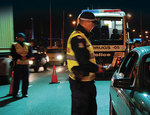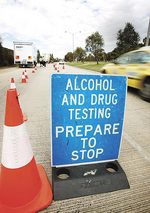Drug driving: the road ahead for police
 Road Safety Road Safety
Road safety researchers at the University of Adelaide say Australia's cutting-edge approach to drug driving laws and enforcement means that some caution is required, especially while drug driver testing is in its infancy. "Australia is doing more than any other country in terms of anti-drug driving laws and enforcement," said Dr Jeremy Woolley, Senior Research Fellow with the University of Adelaide's Centre for Automotive Safety Research (CASR). "Victoria has become the model because it was the first jurisdiction anywhere in the world to introduce anti-drug driving legislation. There are legislative differences from state to state, but all of the states are now doing similar things - with some variations in the equipment they use and the approaches they take to enforcement." CASR Research Fellow Dr Matthew Baldock said alcohol was still the biggest problem in fatal accidents, "but the latest statistics show that more than one in five fatally injured drivers in Australia have illicit drugs in their system".
"This is one of the reasons why the drug driving issue is such a problem and why it's important to find a way to educate the public and legislate against it." While Dr Woolley and Dr Baldock are supportive of the push to combat drug driving, they have raised a number of concerns about drug testing equipment and procedures that have implications for the way such laws are enforced throughout Australia. Earlier this year, Dr Woolley and Dr Baldock were commissioned by the Western Australian Government to conduct a comprehensive review of that state's drug driving laws and enforcement practices. As part of this, they looked at data collected by WA Police over more than 12 months of roadside drug testing. This involved 10,000 drug tests performed in 1000 hours of enforcement, about a third of which took place in rural areas. The drugs tested for were methamphetamine, MDMA or ecstasy, and cannabis. The most common confirmed drug cases involved methamphetamine alone (40% of positive cases) and methamphetamine combined with cannabis (23%). Dr Woolley and Dr Baldock concluded that the initial period of the drug driving legislation in WA had been a success overall, but they made a number of recommendations to improve the new program of enforcement. "Western Australia uses a three-tiered testing system. One of the most significant findings of our study was that the second screening test failed to detect the presence of drugs in 20% of samples, which were later confirmed to be drug positive in laboratory analyses. The second screening test was particularly ineffective for detection of cannabis," Dr Baldock said. Thanks to this finding, new testing kits are now being used in WA. "We expect that this will resolve the problem, but ongoing monitoring is needed to confirm this," Dr Baldock said. Among a range of recommendations, the researchers argued against a general rollout of driver drug testing by WA Police, suggesting that such testing be restricted to 'drug bus' operations only. Dr Woolley said this was because "there are legitimate concerns about the transportation and storage of evidentiary samples, especially given the range of environmental and climatic conditions throughout WA". "With a general rollout, there could be an increase in the likelihood of operator error and inaccurate test results," he said. Dr Baldock likened these issues to the early days of random breath testing. "This will evolve over time. At the moment the equipment is still in its infancy, there are some technical difficulties and a lot of operator expertise is required. Australia really is at the cutting edge here so we need to keep an eye on things until some of these issues are ironed out. "The various states could benefit from sharing more information and experiences, especially in these early days," he said. Story by David Ellis
|





